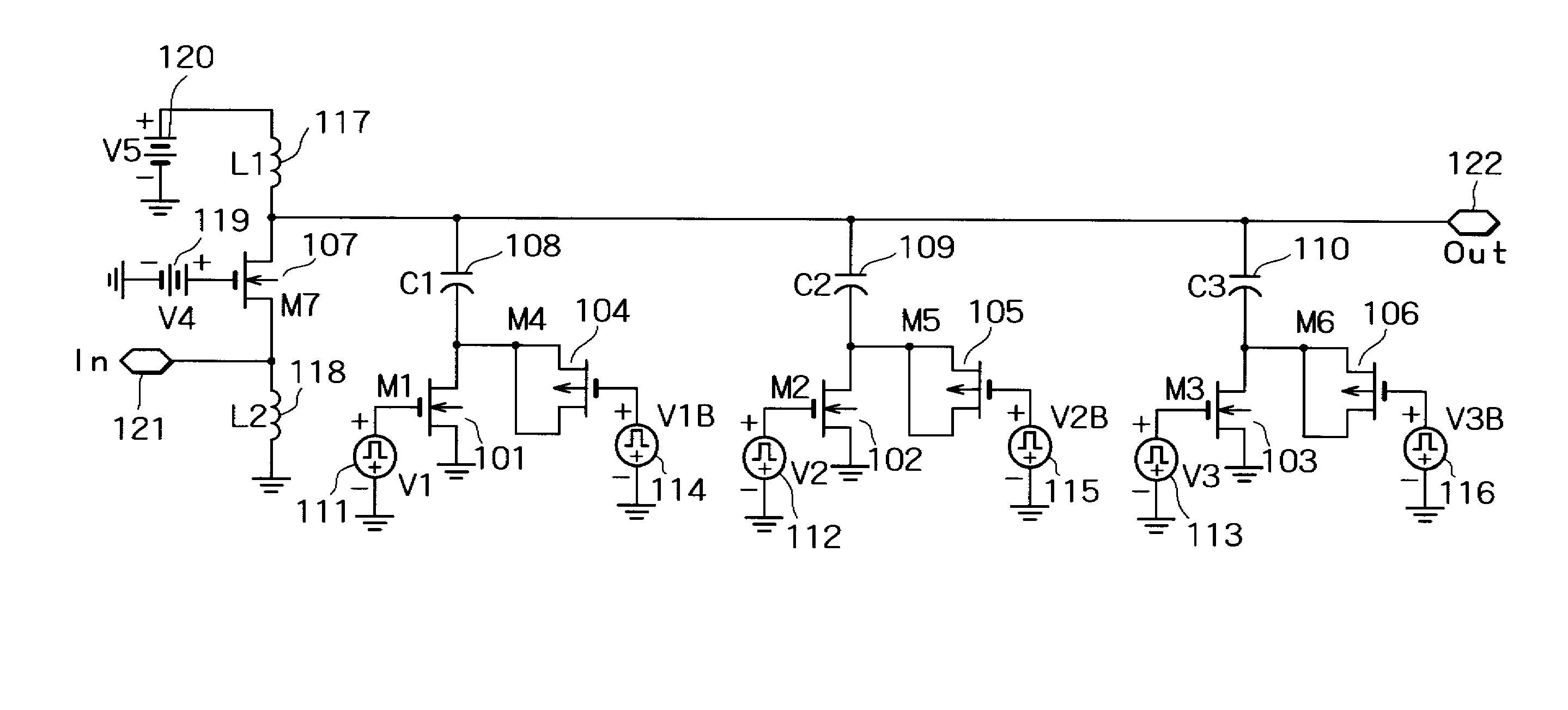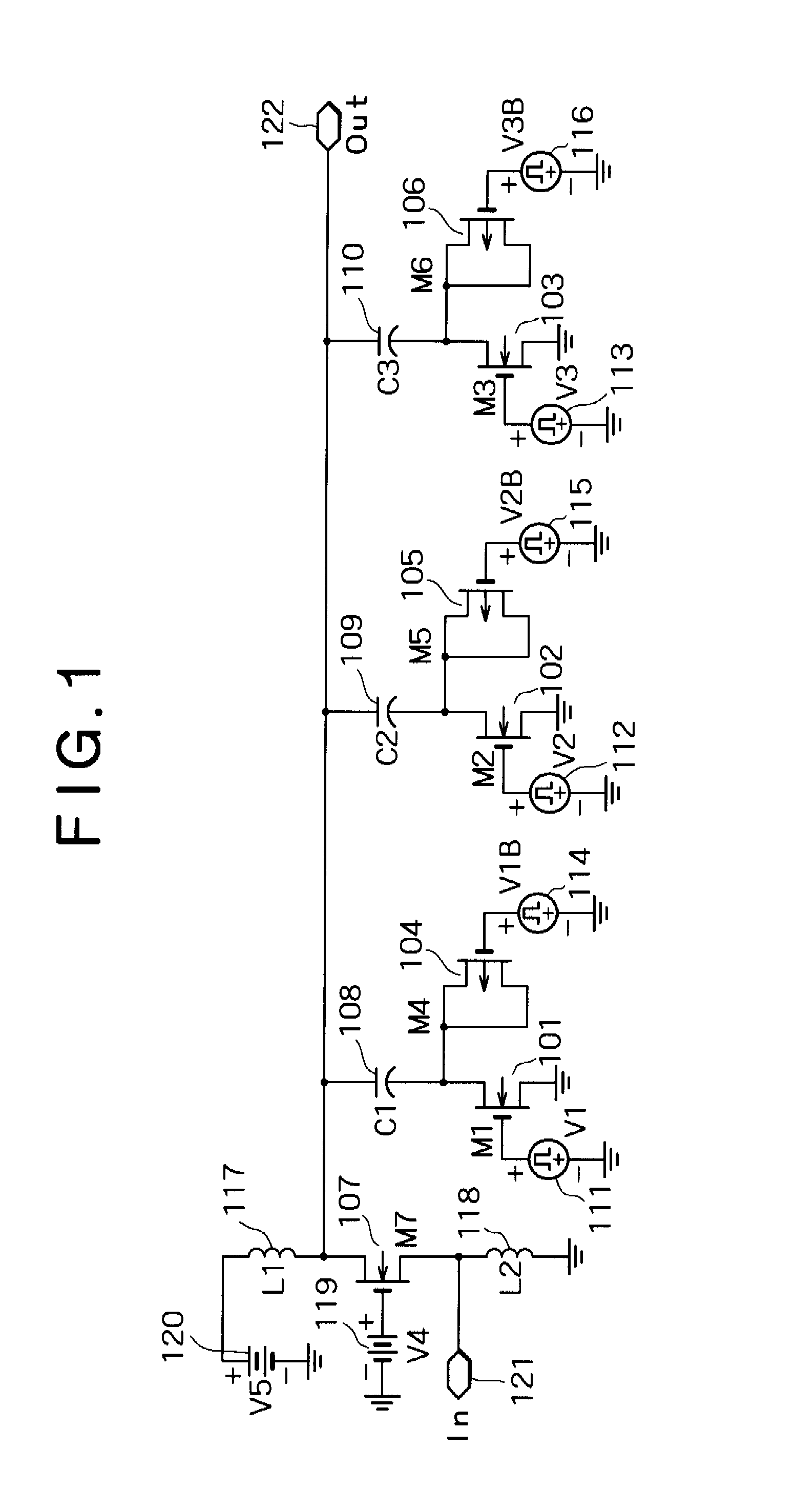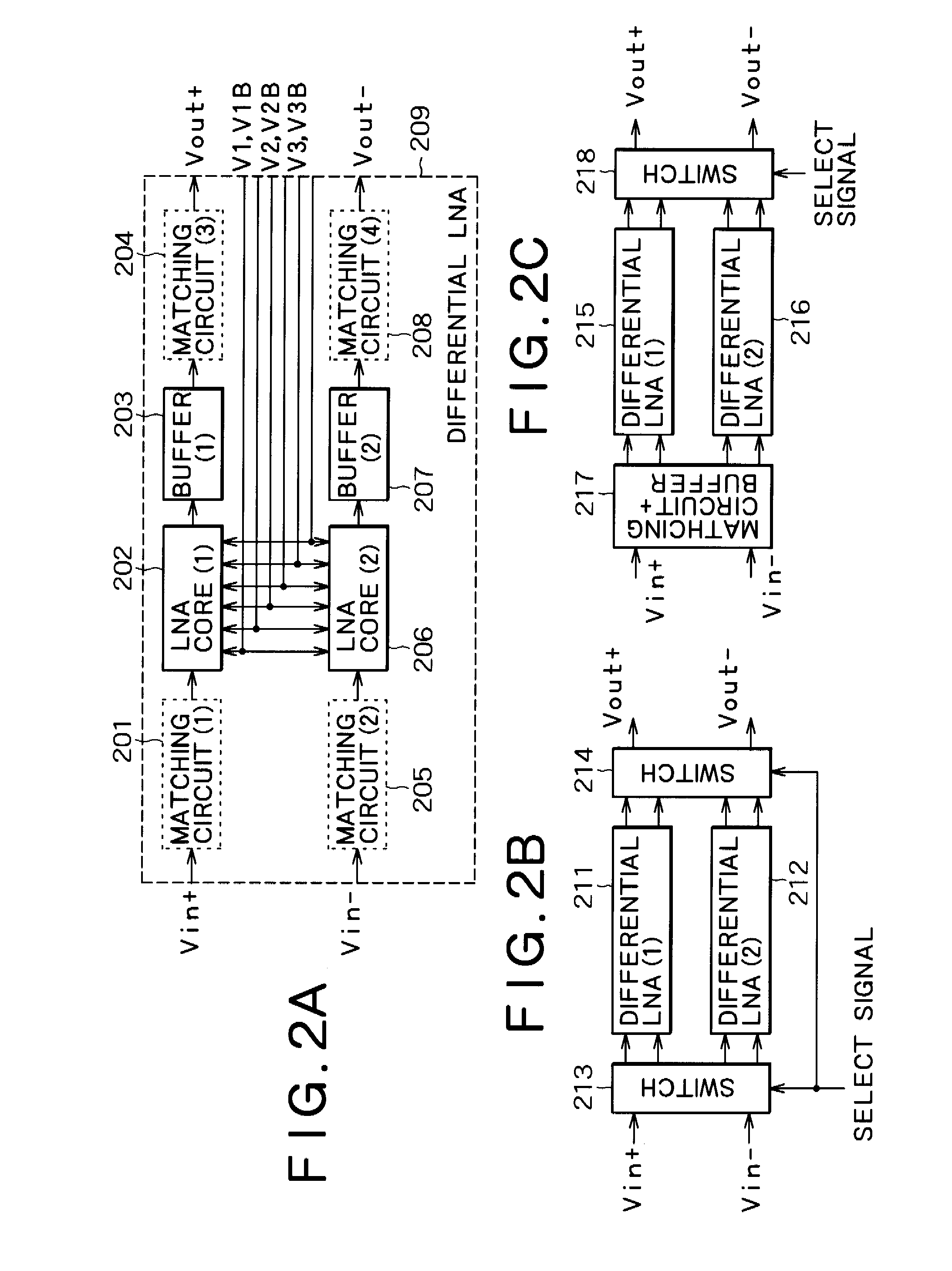High-frequency amplification circuit
a high-frequency amplification and circuit technology, applied in the field of amplifier circuits, can solve the problems of increasing noise factor increasing noise factor, etc., and achieve the effect of high gain, reducing reflection characteristic, and increasing the frequency of desired
- Summary
- Abstract
- Description
- Claims
- Application Information
AI Technical Summary
Benefits of technology
Problems solved by technology
Method used
Image
Examples
Embodiment Construction
[0068]FIG. 1 is a circuit diagram showing the core portion of a high-frequency amplification circuit according to the first embodiment of the invention. A transistor (M7) 107 is a gate-grounded MOS transistor which constitutes a gate-grounded circuit. A bipolar transistor may be used as the transistor 107 with its base terminal grounded to thereby constitute a gate-grounded circuit. An input signal is input to the source terminal of the transistor 107 from an input terminal 121. An inductor (L2) 118 is connected between the source terminal of the transistor 107 and the ground in order to create the path of the DC bias current. It is preferable that the inductor 118 should have its inductance value increased to such a level that the impedance with respect to an AC signal can be neglected. A wire-bonding inductance element can be used as the inductor 118. A bias voltage 119 connected to the gate of the transistor 107 determines the bias current that flows through the transistor 107. P...
PUM
 Login to View More
Login to View More Abstract
Description
Claims
Application Information
 Login to View More
Login to View More - R&D
- Intellectual Property
- Life Sciences
- Materials
- Tech Scout
- Unparalleled Data Quality
- Higher Quality Content
- 60% Fewer Hallucinations
Browse by: Latest US Patents, China's latest patents, Technical Efficacy Thesaurus, Application Domain, Technology Topic, Popular Technical Reports.
© 2025 PatSnap. All rights reserved.Legal|Privacy policy|Modern Slavery Act Transparency Statement|Sitemap|About US| Contact US: help@patsnap.com



